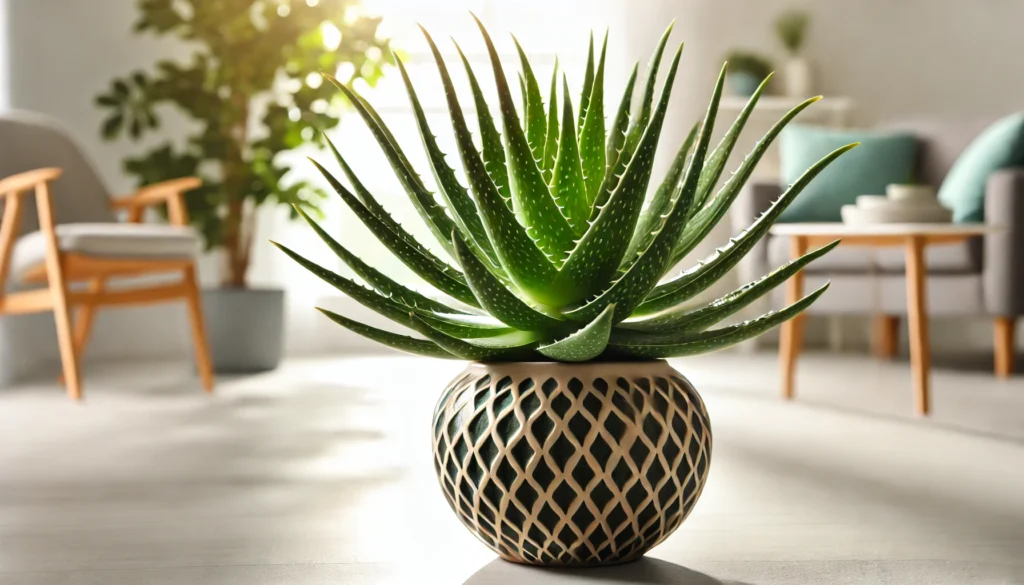
Golden Pothos (Epipremnum aureum) is a popular and resilient perennial vine known for its heart-shaped, variegated leaves that range from deep green to bright yellow. This versatile plant is a favorite among both novice and experienced gardeners due to its easy care and adaptability. Golden Pothos can grow up to 10 feet (3 meters) long indoors and even longer when given the space to trail or climb, making it an excellent choice for hanging baskets or as a climbing vine on a trellis.
History and Ideal Growing Conditions
Golden Pothos is native to the Solomon Islands in the South Pacific. It was introduced to the rest of the world in the 20th century and quickly became a popular houseplant due to its attractive foliage and hardiness. This plant thrives in a variety of indoor conditions, preferring bright, indirect light but also tolerating low light. Golden Pothos prefers temperatures between 65°F and 85°F (18°C to 29°C), making it well-suited to typical indoor environments. It can also survive in higher humidity but adapts well to average indoor humidity levels.
Is Golden Pothos Toxic to Pets?
Unfortunately, Golden Pothos is toxic to pets, including cats and dogs. The plant contains calcium oxalate crystals, which can cause irritation of the mouth, vomiting, and difficulty swallowing if ingested. It’s important to keep this plant out of reach of pets or consider alternatives if you share your home with animals.
Safe Alternatives for Pet Owners
If you’re concerned about the safety of your pets, consider other non-toxic plants that offer similar beauty. Some pet-safe alternatives include the Spider Plant (Chlorophytum comosum), Boston Fern (Nephrolepis exaltata), or Areca Palm (Dypsis lutescens). These plants are also easy to care for and add greenery to your space without the risk to your pets.
Best Practices for Caring for Your Golden Pothos
Golden Pothos is incredibly forgiving and easy to care for, making it a top choice for busy or novice plant owners.
Watering and Humidity
Golden Pothos prefers to be watered when the top inch (2.5 cm) of soil feels dry. Be careful not to overwater, as this can lead to root rot. Water thoroughly, allowing excess water to drain out of the pot, and then let the soil dry out before watering again. While Golden Pothos can tolerate lower humidity levels, it thrives in higher humidity. Misting the plant occasionally or placing it near a humidifier can help it flourish, especially in drier indoor environments.
Soil, Light, and Temperature
Golden Pothos grows best in well-draining soil, such as a standard potting mix. It prefers bright, indirect light but is also highly tolerant of low light conditions, making it perfect for offices or rooms with minimal sunlight. The ideal temperature range for Golden Pothos is between 65°F and 85°F (18°C to 29°C). This plant should be protected from drafts and cold temperatures below 50°F (10°C), which can cause leaf damage.
Common Problems and Remedies
Golden Pothos is generally a low-maintenance plant, but it can encounter a few common issues.
One of the most common problems is yellowing leaves, often caused by overwatering. To prevent this, ensure the soil dries out between waterings and that the pot has good drainage. Brown leaf tips can indicate low humidity or underwatering. Increasing the humidity around the plant and adjusting your watering schedule should help. If the plant’s growth becomes leggy, it may not be getting enough light. Move it to a brighter location to encourage more compact growth.
Invasiveness
Golden Pothos is considered an invasive species in some tropical and subtropical regions due to its vigorous growth and ability to spread rapidly. It can outcompete native plants, leading to environmental concerns. If you live in an area where Golden Pothos is invasive, consider growing it indoors in containers to prevent it from escaping into the wild. Alternatively, you might choose less invasive houseplants like the Prayer Plant (Maranta leuconeura) or the Peperomia (Peperomia spp.).
Propagation and Benefits of the Golden Pothos
Golden Pothos is one of the easiest plants to propagate, making it an excellent choice for sharing with friends or expanding your plant collection. Simply take a cutting with at least one node, place it in water or soil, and watch it root in a few weeks. Beyond its aesthetic appeal, Golden Pothos is known for its air-purifying qualities, as it helps remove toxins from the air, contributing to a healthier indoor environment.
Final Thoughts
Golden Pothos is a versatile and hardy houseplant that brings vibrant color and easy care to any indoor space. While it’s toxic to pets, there are many safe alternatives to consider if you have animals at home. With proper care, your Golden Pothos will thrive, providing lush greenery and a touch of nature to your home. Whether you’re a seasoned plant owner or just starting out, this plant is a fantastic addition to any indoor garden.



